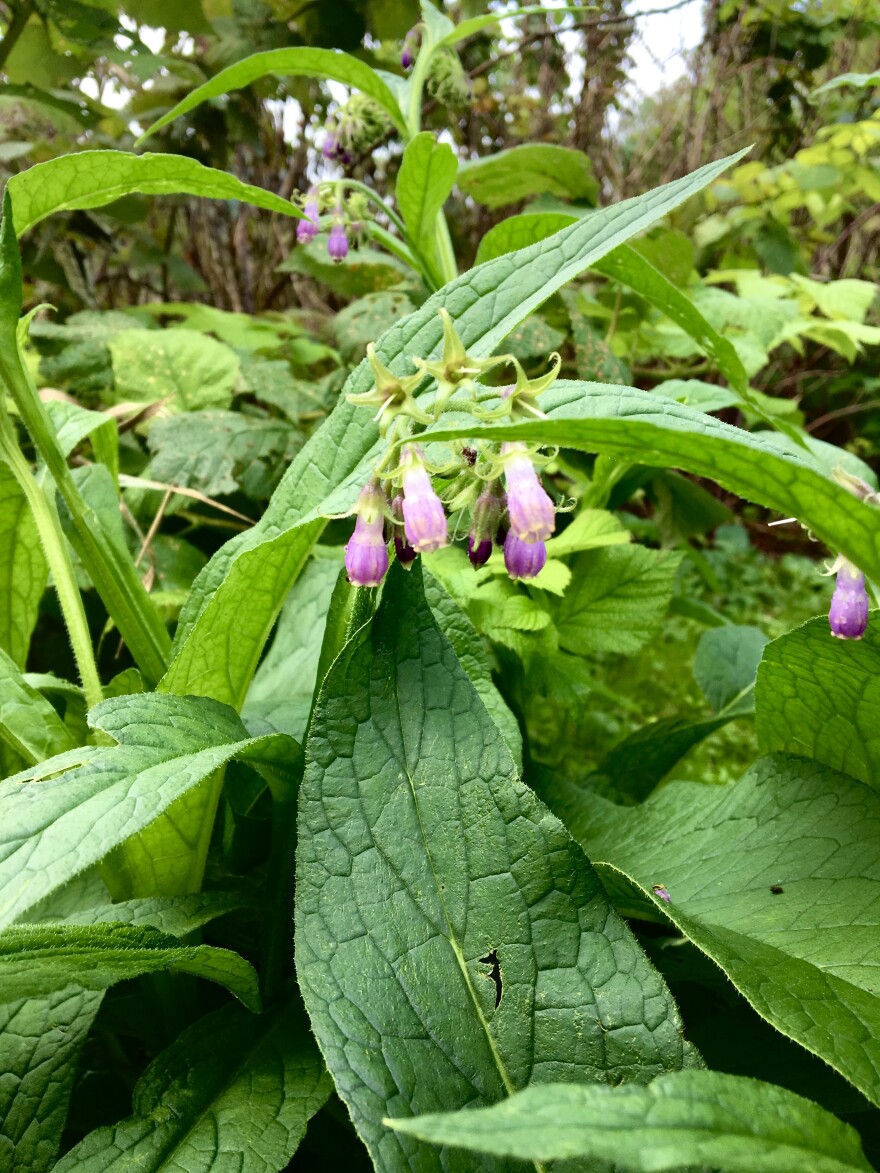Comfrey is a profound healer when it comes to open wounds. Its name is derived from the Latin word confervo, meaning knit, grow together, or heal. Its use is documented as far back as 400 BCE by Greek physicians. Even its scientific name, Symphytum, is the Greek word for ‘to grow together.’ A lot of plants have names with ancient meanings based on their uses.
A great aspect of comfrey is that it truly works. You actually have to be careful because it can work too well. A wound may heal on the outside faster than the inside, trapping bacteria and causing infection. To avoid this, you have to apply the ointment on the inside of the wound first.
Comfrey contains a chemical compound called allantoin which promotes cell-reproduction. Allantoin is what heals the boo-boos. Allantoin is also found in the milk of nursing mothers.
Comfrey has some fun folktales around it. It’s used for luck while traveling; some say that if you put a leaf in your luggage it will protect it from being lost or stolen. Travelers can also use the root to be sure their lovers will be faithful in their absence.
Another place you will find comfrey is on a midwife’s tool belt. Leaves are frozen into pads which accelerate healing after childbirth.
Your garden will appreciate comfrey as well. Its taproots are long and strong and have a knack for breaking up clay and hard soils. It will eventually aerate the ground as its black roots draw hard to pull minerals into its leaves. The leaves can be harvested and placed around other plants to feed them the out of reach minerals. It’s also one of the rare plants that can pull vitamin B12 from the soil.
It is not often eaten, but the young leaves and flower buds have a great flavor. There are concerns about eating comfrey since it contains pyrrolizidine alkaloids which can cause an upset belly and liver damage.
You can also spray yarrow tincture on the wound first. Yarrow is another profound healer that is amazing at stopping bleeding, and the alcohol in the tincture will help disinfect the injury.
To make the ointment, you mix a small amount of filtered honey and comfrey cold infused oil. The sugars in the honey draw water out of the tissue that is damaged. This reduces swelling and sets the stage for comfrey to work its magic.
Apply the honey/comfrey ointment first on the inside and then on the outside. This order of application is important to prevent the outside from healing faster than the inside.
EDIBLE MOUNTAIN Comfrey The Wound Healer






















